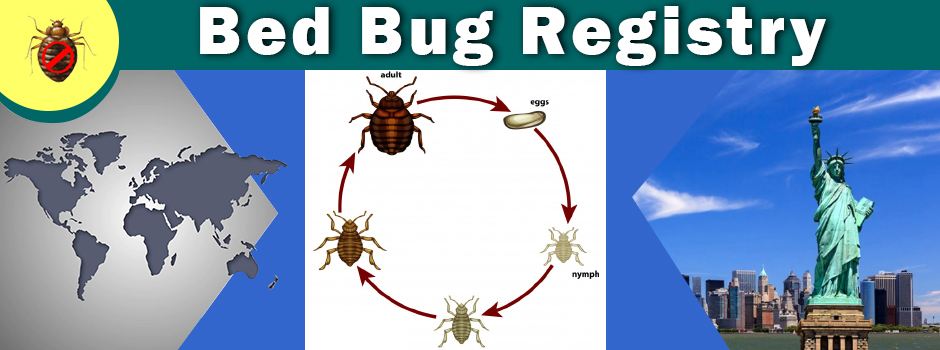This article was originally published on August 22, 2011 and expired on September 22, 2011. It is provided here for archival purposes and may contain dated information.
Bed bugs continue to be a problem around central Illinois. Rhonda Ferree, University of Illinois Extension, horticulture educator, reports that she recently had bed bugs brought into her Jacksonville office for identification.
The bed bug feeds at night on the blood of humans and other warm-blooded animals including chickens, cage birds, and other birds as well as dogs, cats, and other mammals. Infestations can come from bird nests on buildings as well as in clothes, luggage, and other materials transported from infested areas. People generally do not react to the bites for several weeks, but eventually develop red welts similar to those of poison ivy. Frequently, several welts are produced in the vicinity of a single bite and may even be produced on other parts of the body remote from the bites. Bed bugs do not transmit diseases with their bites, but secondary infections can result from scratching the bites.
Bed bugs are active from about 9 p.m. until 7 a.m., being most active from midnight to 3 a.m. They are relatively fast-moving. Unfed bed bugs are flattened, tan, circular bugs up to three-sixteenths inch in diameter. Bugs that have recently fed are blackish and somewhat rotund from their blood meal. Eggs are white and elongate, being of the size and color of house dust. They are cemented to harborage surfaces and are difficult to see without a hand lens.
During the day, bed bugs hide in cracks and crevices near where the person or other host sleeps. They are most common in or near beds and upholstered furniture, being most common under the dust cover of the box springs and in cracks and crevices of the bed headboard. They are also common along piping on the edge of the mattress and springs, behind pictures and electrical outlet plates, under baseboards, along the edge of carpeting and rugs, and in cracks and crevices associated with the bed frame, bedside table, and dresser. Most are located within three to four feet of the sleeping person, but a few may be twenty or more feet away. Detailed searching of these areas is essential in locating them. They produce black fecal spots in their harborage areas, making it easier to identify these areas even if the bugs are not found.
According to Phil Nixon, Extension entomologist with University of Illinois Extension, control of bed bugs involves a multi-pronged, IPM approach. Bugs are killed with direct application of various insecticides, steam, and cold. All are used by various pest management professionals. Bed bugs show varying levels of resistance to pyrethroids, but are effective when sprayed directly onto bed bugs. There are no labeled insecticides that are effective as a dried spray residue against all bed bugs, but local populations are likely to susceptible to one or more labeled insecticides.
Bed bugs are also killed by exposure to at least 120 degrees F for 30 minutes. Bugs may not be killed by washing, but are killed by typical drying in a clothes dryer. Cold treatment is less consistent in effectiveness, requiring sub-zero degrees F for 2-3 weeks. Mattresses and box springs should be encased in high quality covers such as Protect-A-Bed to eliminate many harborage areas and to avoid direct application of insecticide to them, although proper insecticide application is acceptable. Traps, such as Interceptor, are effective when placed under the legs of the bedstead to catch migrating bugs.
Because bed bug control is very time consuming and involves a multi-directed approach, costs of proper bed control are considerably higher than that for many other pests, whether done by a pest management professional or as a do-it-yourself project.
For those with students returning to college, the Bed Bug IPM website focuses specifically on University of Illinois residence halls and apartments. However, the information applies to anyone in apartments or other schools in the area. For more information, photos, and recommendations, go to bedbugs.illinois.edu
-30-
Read more:
Bed Bugs- U of I Extension

 Residence
Residence  Location
Location 










